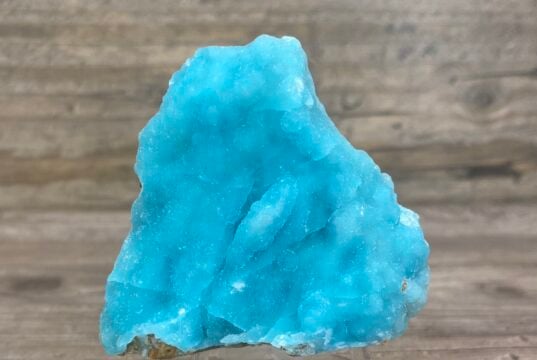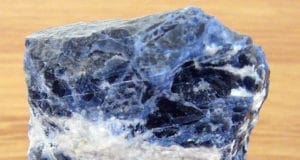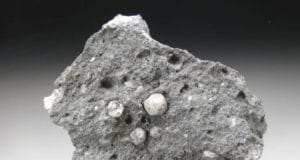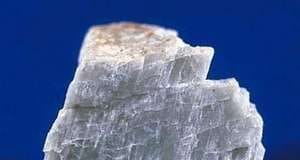Silicates Minerals
This is the most important organization of minerals. Silicates are crafted from metals blended with silicon and oxygen. There are greater silicates than all other minerals put together.The mica at the left is a member of this group.
Nosean
Nosean, otherwise called Noselite, is a mineral of the feldspathoid type in tectosilicate with formula: Na8Al6Si6O24 (SO4). H2O. It frames isometric precious stones of...
Diopside
Diopside is a member of pyroxene group mineral with formula is MgCaSi2O6. Specimens can be colorless but are more often bottle green, brownish green, or light green in color. It has two distinct prismatic cleavages at 87 and 93° typical of the pyroxene series. Diopside occurs in the form of equant to prismatic crystals that are usually nearly square in section.
Lazurite
Lazurite is a member of sodalite group in feldspathoid mineral also it is tectosilicate with formula is (Na,Ca)8[(S,Cl,SO4,OH)2|(Al6Si6O24)]. A sodium calcium aluminosilicate, lazurite is the main component of the gemstone lapis lazuli and accounts for the stone’s intense blue color
Sodalite
Sodalite is a feldspathoidal tectosilicate mineral that is rich royal blue widely used as an ornamental gemstone. Chemical formula is Na8 (Al6Si6O24) Cl2. Specimens can be blue, gray, pink, colorless, or other pale shades. They sometimes fluoresce bright orange under ultraviolet light. Sodalite nearly always forms massive aggregates or disseminated grains.
Leucite
Leucite is a feldspathoid mineral in group of tectosilicate. It is a rock forming mineral include potassium and aluminium tectosilicate, formula is K.Specimens can...
Nepheline
Nepheline is the most common feldspathoid mineral in the world, its name from the Greek word nephele, which means “cloud” a reference to the fact that the mineral becomes cloudy or milky in strong acids. Specimens are usually white in color, often with a yellowish or grayish tint.
Zeolites
Zeolite is a group of silicate minerals that a family of hydrated aluminosilicate minerals that contain alkali and alkaline-earth metals with unusual properties with importance industrial application. Zeolite form is usually well-formed crystals with pale colors and generally soft and can easily crushed.They are found in geologically young volcanic fields.
Natrolite
Natrolite is a tectosilicate mineral belong to zeolite group members.Its formula Na2Al2Si3O10 • 2H2O. A hydrated sodium aluminosilicate, natrolite takes its name from the Greek word natrium, which means “soda” a reference to the sodium content of this mineral. Natrolite can be pale pink, colorless, white, red, gray, yellow, or green.
Wollastonite
Wollastonite is a group of innosilicate mineral, formula is CaSiO3 that may inlude small amount of magnesium, manganese and iron substituting for calcium. A...
Hornblende
Hornblende is a inosilicate amphibole minerals, which are two type hornblende minerals. They are ferrohornblende and magnesiohornblende. They are an isomorphous mixture of three molecules; a calcium-iron-magnesium silicate, an aluminium-iron-magnesium silicate, and an iron-magnesium silicate.
Plagioclase Feldspar
Plagioclase is series of framework silicate minerals in feldspar group. Plagioclase is a continuous series of solid solutions known as the plagioclase feldspar series,...
Lepidolite
A light mica, lepidolite is Earth’s most common lithium-bearing mineral. Its name is derived from two Greek words: lepidos, which means “scale,” and lithos, which means “stone.” Although typically pale lilac, specimens can also be colorless, violet, pale yellow, or gray. Lepidolite crystals may appear pseudohexagonal. The mineral is also found as botryoidal or kidneylike masses and fine- to coarse-grained, interlocking plates. Its perfect cleavage yields thin, flexible sheets. Lepidolite occurs in granitic pegmatites, where it is associated with other lithium minerals, such as beryl and topaz. The mineral is economically important as a major source of lithium, which is used to make glass and enamels. It is also a major source of the rare alkali metals rubidium and cesium.


















































